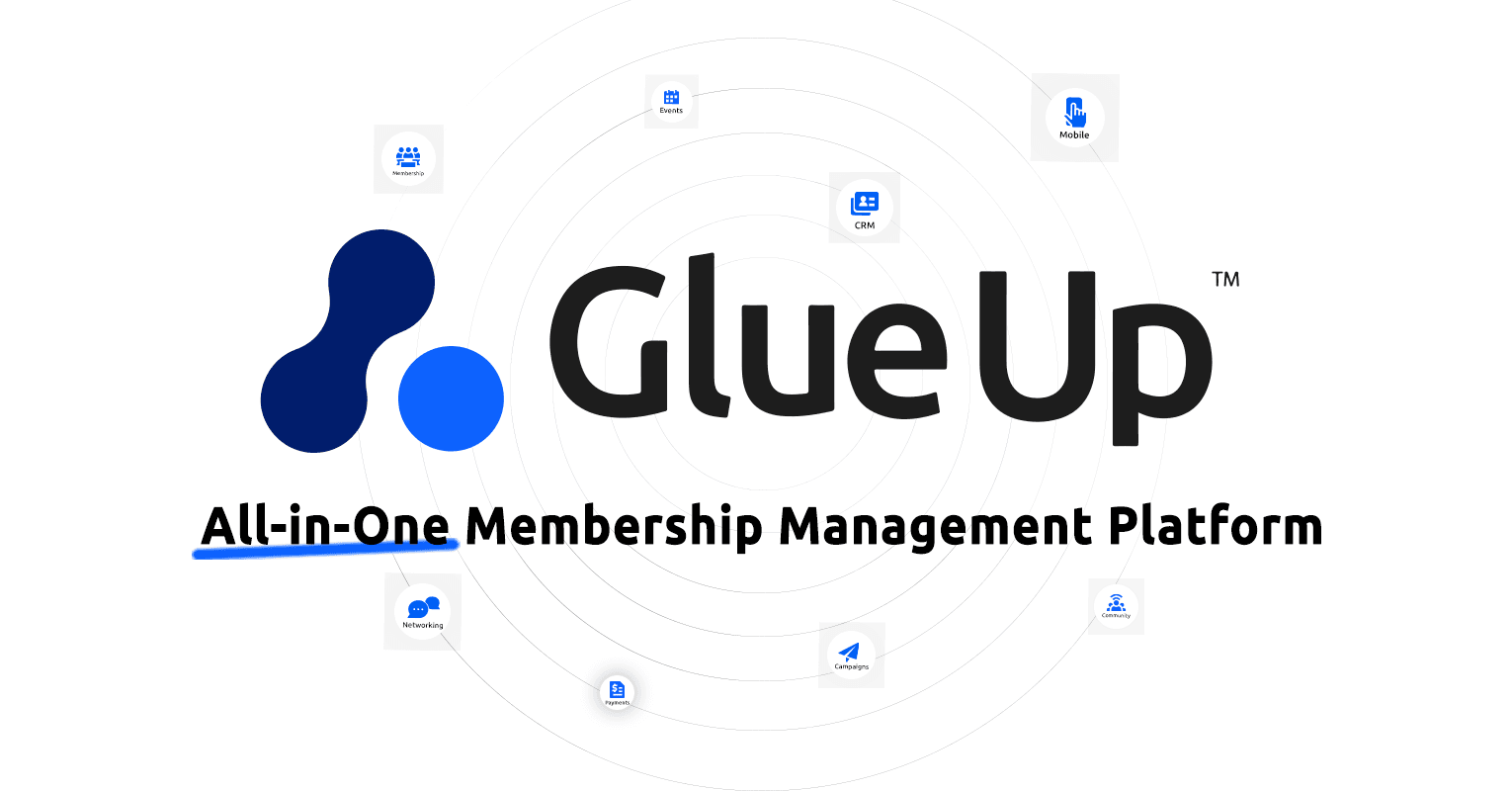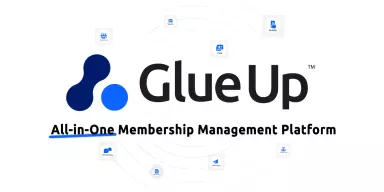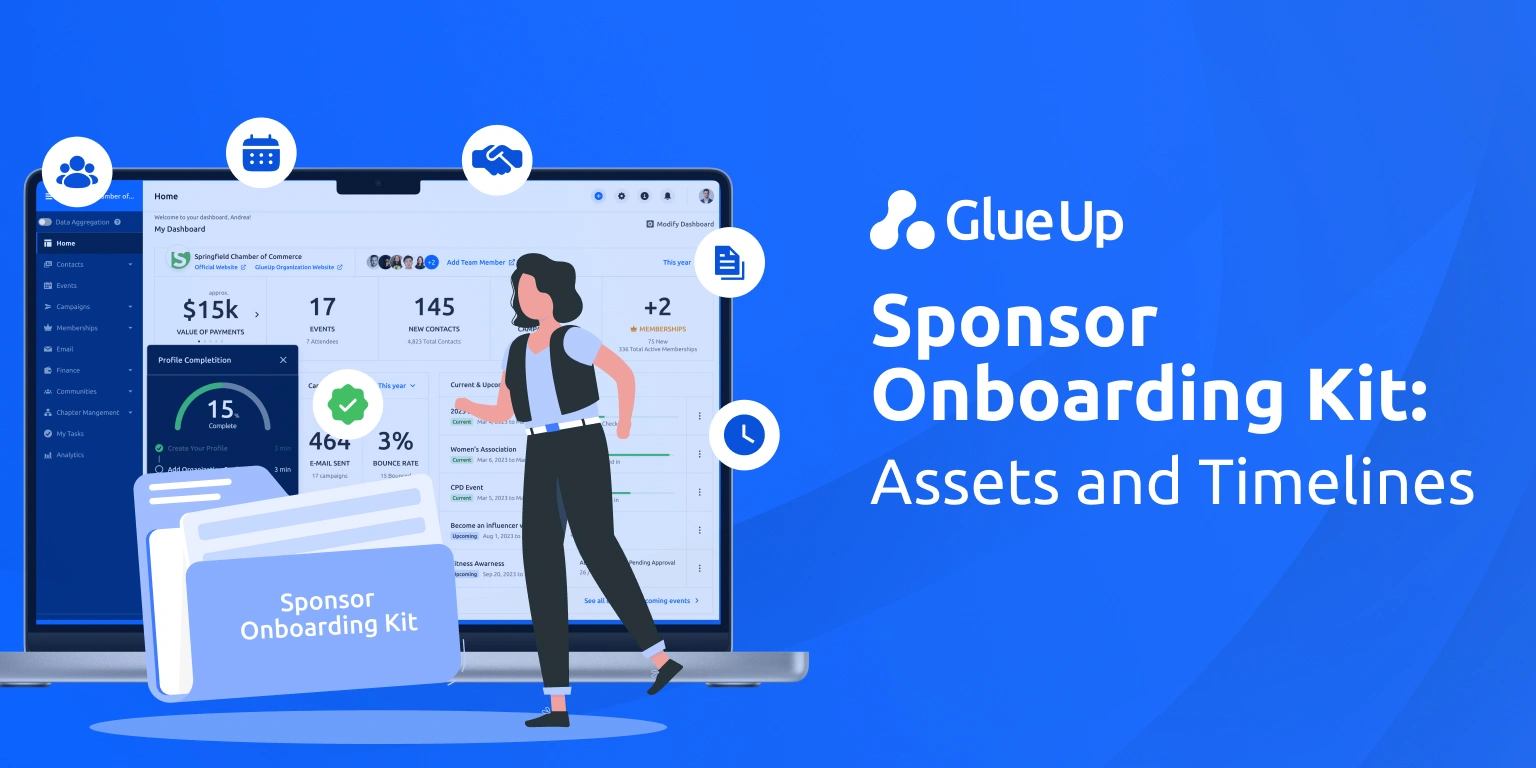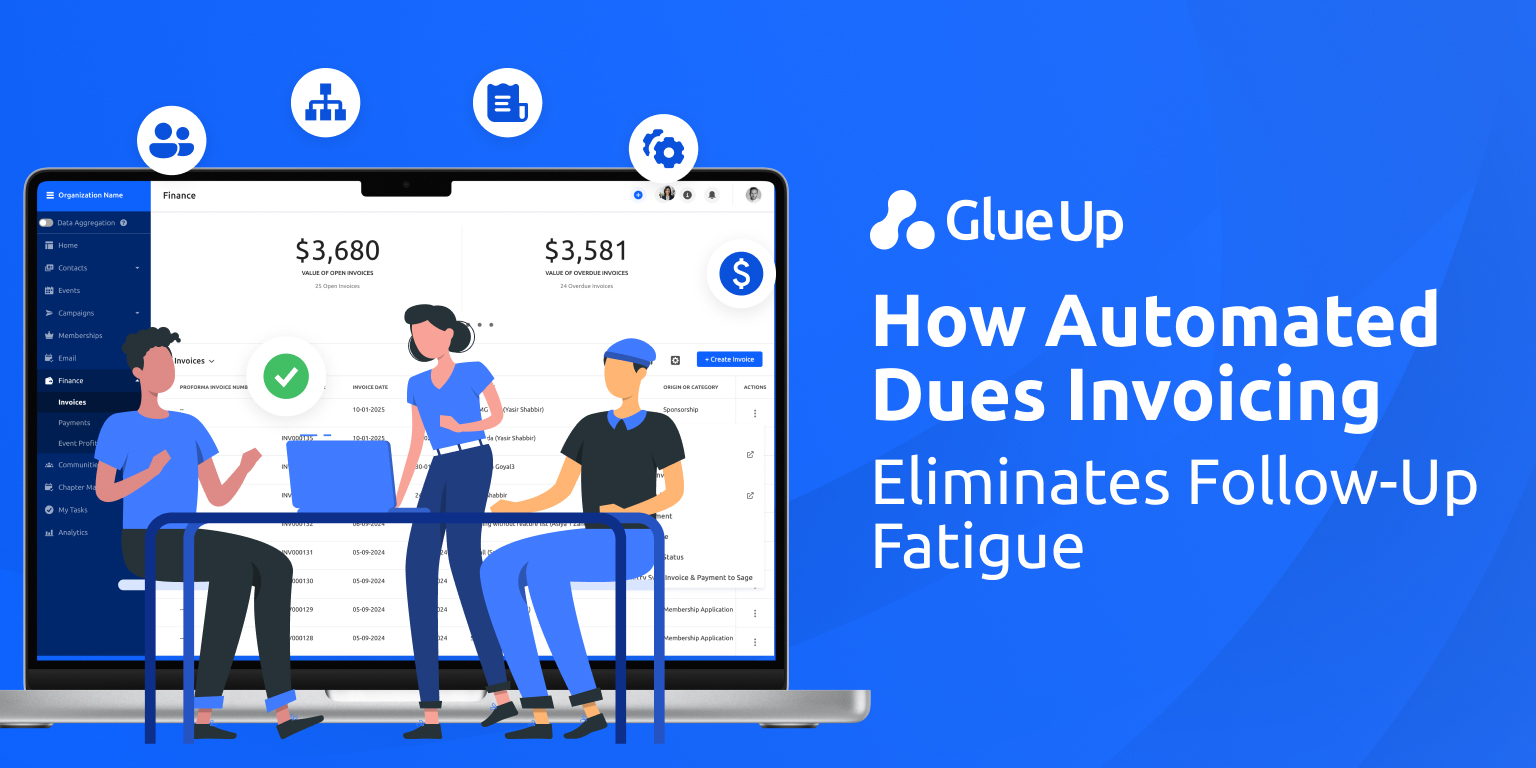
You just launched a membership drive. Onboarding emails go out, first events fill, optimism hums. And then, slow fade. If you’re asking how to keep members engaged, you’re not alone. Engagement is a living system. That system must satisfy three human needs repeatedly: agency, mastery, connection. With the right scaffolding, member engagement becomes a designed outcome.
In this article, you’ll read a story, one of potential turned to persistence. You’ll get a human-centered framework, deep research background, field examples, plug-and-play tactics, measurement guidance, and a clear path to operationalizing with Glue Up. If you want your association or chamber to be one where members stay, advocate, and renew, this is your playbook.
Key Takeaways
Engagement is design. Long-term member engagement happens when your system consistently meets three human needs: autonomy (choice), competence (visible progress), and relatedness (belonging). These are the psychological foundations of why people stay, participate, and renew.
The first 45 days decide everything. Member engagement is won early. Structured onboarding that mixes head-starts, quick wins, peer cohorts, and micro-roles anchors motivation before it fades.
Recognition is biology. Dopamine and oxytocin drive return behavior. Praise actions. Let peers give kudos. Tie recognition to values. Publicly celebrate “wins of the week.” Done right, this turns participation into habit and habit into identity.
Measure what truly matters. Build an engagement spine that tracks behaviors tied to renewal, event repeat rate, community replies, TTFV (time to first value), and sentiment metrics like NPS or CES, instead of vanity stats.
Use re-engagement as a signal. Detect drift early through engagement scores. Send personalized value-forward nudges, peer tags, and quick-win resets before disengagement becomes churn.
Sustain momentum with rhythm. Plan a year-round cadence of low-cost, high-impact activities, peer circles, AMAs, micro-challenges, and polls, that keep members active between big events.
Recognition quality beats quantity. Avoid “points factories” and leaderboards that reward busyness. Instead, reward collaboration, contribution, and consistency, behaviors that mirror community values.
Operationalize engagement through Glue Up. Use Glue Up’s ecosystem: Smart Lists, Membership Workflow Manager, Community, Events, AI Copilot, and Dashboards; to automate onboarding, measure engagement, track sentiment, and power re-engagement with precision.
The psychology of retention is measurable. When associations build workflows aligned with how the human brain rewards progress and connection, retention becomes predictable.
Design creates gravity. Every email, badge, event, and dashboard cue should reinforce autonomy, competence, and belonging. When you engineer that loop, members identify with your organization.
Quick Reads
The Invisible Leak: Why Engagement Fades
You’ve seen it: a surge of enthusiasm in months 0–3, then silence by month 6. Committee slots go unfilled. Discussion forums flatten. The renewal email lands on an unread tab. The question is “why did the spark die?”
That spark dies when three psychological needs go unmet:
Autonomy — members feel controlled
Competence — members lose sight of progress
Relatedness — members stop feeling they belong
These are the three core needs in self-determination theory, developed by Edward Deci and Richard Ryan, which posits that satisfying autonomy, competence, and relatedness is central to intrinsic motivation. When these needs are supported, people persist, learn, and flourish.
In real membership terms: autonomy means giving choice and respect; competence means showing clear progress and mastery; relatedness means weaving me into “us.” When your system fails one of those, engagement shrinks. The rest of this article unpacks exactly how to design a membership lifecycle that holds all three and thus answers how to keep members engaged in a sustainable, measurable way.
The Triad on How to Keep Members Engaged
Before tactics, let’s build a lens.
Autonomy (Choice)
Control kills engagement. People greatly reduce effort when they feel coerced. But when you embed choices: track, stream, group, event format; they align more with internal motivation. Self-determination theory shows that environments that supply choice and volition nurture deeper involvement.
For member organizations, autonomy means letting members pick their “lane” (e.g. practitioner, leadership, advocacy), choose from micro-paths (events, committees, content), and opt into nudges, rather than forcing them into a one-size funnel.
Competence (Progress You Can See and Feel)
People engage when they see they’re getting better, with tasks that balance challenge and mastery. That’s competence. But progress must be visible. That’s where “small wins” and “endowed progress” come in.
The progress principle (from Amabile & Kramer) suggests that people feel energized by small wins. Even minor progress, when acknowledged and made visible, fuels momentum. (Yes, this is widely cited in organizational behavior literature.)
“Endowed progress” gives members a head-start (e.g. “You’re already 20% in”), a psychological trick shown to increase completion rates in loyalty studies.
Without that visual bar, many members flounder. They feel invisibility.
Relatedness (You Are Part of Something)
Belonging is a need. People stay when they feel “one of us.” In experimental and field studies, cues of identity (badges, cohorts, social roles) significantly strengthen persistence.
In retention research, a systematic review found that SDT is useful for evaluating retention strategies precisely because relatedness and autonomy features in good design are such consistent predictors. Belonging helps members anchor to your mission.
A 45-Day Story: Onboarding That Makes You Stay
If you won’t fight for engagement in the first six weeks, you’ll have to fight harder forever. Here’s a weekly path, “chapter zero,” designed to anchor the triad.
| Time | Focus | Intent | Touch | Glue Up tie-in |
|---|---|---|---|---|
| Day 0 | Head-start | Give a visible jump into the journey | “You’re already 20% done” checklist | Use Member Profile “progress ladder” with initial checkboxes |
| Days 1–7 | Lane selection | Let them choose their path | Survey + content segmentation | Smart Lists route them into practice tracks |
| Days 8–14 | First value sprint | Let them feel competence | Ask them to comment, register, post one idea | Mini event with a “small win” reward |
| Days 15–21 | Cohort formation | Foster relatedness | Peer huddle, introduce members | Community module groups of 6–8 |
| Days 22–30 | Micro-role activation | Give agency and identity | Assign them a role, note taker, host intro | Role assignment in community; badge = “Founding cohort” |
| Days 31–45 | Progress recap + next steps | Make growth visible | Email: “Here’s your impact so far” + next ladder rung | Automated campaign + progress bar snippet |
Narratively: begin with momentum, then let agency, competence, and belonging build in that order, but reinforce all three every week. The progression flows.
The Neurochemistry of Return
Recognition is a neurochemical architecture. When people feel seen, the brain releases dopamine and oxytocin, neurotransmitters that make us come back. Dopamine reinforces the behavior that triggered the reward, while oxytocin cements the sense of belonging to the group that offered it. In other words, every “nice work” is a small neural investment in retention.
Behavioral psychology and neuroscience agree: our engagement systems are feedback loops. When those loops are designed intentionally, they turn participation into habit and habit into identity. When they’re ignored, silence grows.
That’s why the most effective associations build recognition into the daily rhythm of their community: public, peer-driven, emotionally intelligent, and tied to purpose.
Here’s what the research and field experience say really works:
1. Process-Based Praise
Praise the behavior, not the person. Saying “you reached out to five new members this week” does more than sound nice. It activates competence feedback, a mechanism first detailed in Carol Dweck’s studies on mastery orientation. It tells the member their actions produce results. That single phrasing change (“you did” instead of “you are”) keeps motivation intrinsic and repeatable.
Glue Up communities that celebrate measurable, member-led actions, like hosting, commenting, mentoring, or moderating, see those behaviors repeat 2–3× more often than those that only spotlight senior leaders or “stars.” Members emulate what gets noticed.
2. Peer-to-Peer Kudos
Neuroscience calls it social reward circuitry, a built-in system that lights up more strongly when approval comes from peers rather than authority figures. Let members recognize each other. Give them tokens, badges, or shoutouts to exchange freely. Peer affirmation releases both dopamine (pleasure) and oxytocin (trust), binding participants together more effectively than any corporate announcement ever could.
3. Meaningful Badges That Signal Identity
Badges only matter if they mean something socially. A “Peer Mentor,” “Leadership Circle,” or “Chapter Advocate” tag is identity shorthand. Humans use visible markers to navigate status and belonging. Anthropologists have written for decades about how symbols of contribution sustain cohesion in tribes, workplaces, even online forums.
The key: tie badges to behaviors that express values.
Award “Advocate” to members who recruit thoughtfully, not simply to those with the most referrals. Make “Mentor” require participation in at least one peer cohort. And show badges publicly: on profiles, event rosters, community replies; so, each one becomes a micro-signal that engagement matters here.
4. Live “Win” Moments That Anchor Memory
Memory needs emotion to stick. Every live “small win” moment at a call or event fires a quick hit of dopamine and adrenaline, anchoring positive memory to your organization.
Harvard Business Review’s Progress Principle research showed that even minor progress creates disproportionate motivational lift. When members share something, they accomplished, finishing a certification, closing a deal, hosting an event, the act of public storytelling cements the experience for everyone listening. They remember who celebrated it with them. That’s how identity fuses with community.
5. Avoid Points Factories
Leaderboards that reward quantity over contribution might spike early engagement but eventually produce the overjustification effect, when external rewards undermine intrinsic motivation. People chase badges, not meaning, and eventually burn out. The dopamine hit fades because the recognition feels performative.
Instead, measure participation quality (helpfulness, consistency, collaboration) rather than sheer activity. This sustains serotonin-based satisfaction, the quiet, stabilizing sense of pride that drives long-term affiliation.
Recognition is scaffolding for belonging. It tells the brain, “You matter here.” When you build your platform to mirror how the brain rewards connection, through competence, peer trust, and visible progress, you stop guessing about engagement. You start engineering it.
And that’s the neurochemistry of return.
Measure What Matters: An Engagement Spine
You can’t manage what you don’t measure. But many orgs default to vanity metrics: page views, event RSVP counts. Instead, build a measurement spine that ties directly to how to keep members engaged.
Engagement Score (0–100)
Pick 10–12 behaviors that correlate with renewal (attendance, replies, committee service, resource shares, referrals). Assign weights based on lift to renewal. Build a rolling 90-day composite per member.
Community Health
DAU/MAU (stickiness)
Reply ratio (% of posts with responses in 24 hours)
New thread to reply ratio
Momentum Metrics
Time to first value (TTFV) — days from join → first meaningful act
Repeat event rate — % attending ≥2 events in a quarter
Progress velocity — Δ in % ladder completion per month
Sentiment and Effort
NPS (quarterly) with open comments
CES / effort score at key journeys (join, renew)
These metrics form your feedback loop. Watch cohorts over time, see drop-off curves, run A/B tests of new nudges. Integrate this into Glue Up dashboards.
Re-Engagement Flow: Bring Back the Drifted
Even strong systems have drift. Here’s a 2-week play to re-engage members whose engagement scores dip or who skip two key touchpoints.
Trigger: 60 days of inactivity or 2+ negative deltas in score.
Sequence:
Day 1 — Email with three content picks aligned with their track; “small sprint inside.”
Day 5 — Community tag in a thread matching their interest; “we miss your voice.”
Day 8 — Head-start checklist reset (you’re 30% in already) + one 5-minute action.
Day 12 — Personal note (ambassador or staff) referencing something they did before (e.g. “liked your post on X”) and inviting back.
Automate with Smart Lists + journey rules in Glue Up; AI Copilot can draft the personal note.
Year-Round Low-Cost Engagement Calendar
Here’s a 12-month scaffold you can rotate. These require modest staff investment but high psychological yield.
Week 1 — Office hours: host opens Q&A (30 min)
Week 2 — Show Your Work: members post one project or lesson learned
Week 3 — Peer circle lightning talks (3 × 5 minutes)
Week 4 — One-question poll “What’s top challenge?”
Quarterly — Micro-challenge (5 days) with daily prompts
Mid-year / year end — Member-generated playbook (crowdsource templates)
Ad hoc — Job swap shadows, value-receipt snapshots in renewal nudges
Automate invites and reminders via Glue Up. Make sure every single event has a visible progress rung or badge reward.
Putting It on Rails with Glue Up
You don’t reinvent systems, you glue them.
Member Profiles + progress ladders show what rung a member is on (Networking, Learning, Leadership).
Smart Lists + automated campaigns segment by role, engagement block, or intent.
Community module runs peer circles, kudos threads, reply tracking.
Events in Glue Up host micro-events; repeat rates auto tracked.
AI Copilot writes nudges, shoutouts, progress recaps, personal re-engagement notes.
Dashboards visualize engagement score, cohort curves, TTFV, and sentiment trends.
Renewal workflows embed a value snapshot (number of connections, CE credits, posts replied) to show ROI.
Everything from onboarding to re-engagement can live in Glue Up workflows.
Sample Copy Snippets
“You’re already 20% into your first-month path. Two tiny actions today unlock your peer circle.”
“Choose your ladder: Networking, Learning, Leadership. We’ll show your progress every Friday.”
“Say hi in the welcome thread. Your intro helps someone like you find their tribe.”
Use these in emails, in the portal, or in community prompts.
Why This System Works
SDT and sustained motivation: SDT remains one of the strongest predictors of internalized, long-term engagement across life domains.
Progress principle: recognizing small wins energizes persistence (Amabile & Kramer)
Endowed progress effect: giving a head-start increases completion rates in loyalty settings
Behavior changes tech and failure modes: many systems fail because they support engagement with the tech, not with the underlying behavior; applying SDT properly helps maintain deeper momentum.
Over justification risk: heavy reliance on external rewards undermines intrinsic motivation over time.
These are your guardrails. If you overdo external rewards, or stack too many forced tasks, or ignore belonging cues, the system unravels. Use the triad (autonomy, competence, relatedness) as your north star.
Engagement As Design
If you see engagement as luck, some magical sauce, it will always feel fragile. But when you see it as design: where every cue, email, badge, and event reinforces autonomy, competence, and belonging; you build gravity.
Membership is a momentum loop. You design the loop. You measure the loop. You feed the loop.
If you do that, you cohere a community that wants to stay.



